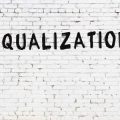Understanding Feng Shui: A Brief Overview
If you’ve ever walked into a room and instantly felt at ease—or, on the flip side, strangely uncomfortable—you’ve already had a taste of what Feng Shui is all about. Rooted in ancient Chinese philosophy, Feng Shui (pronounced “fung shway”) is all about creating harmony between people and their environments. While it may sound mystical, at its core, Feng Shui is about arranging your surroundings to support well-being, productivity, and positive energy—something that definitely speaks to the modern American workplace.
The origins of Feng Shui go back over 3,000 years in China, where it was used to design cities, homes, and even tombs. The basic idea? Everything around us carries energy, known as “chi,” and the way we organize our spaces can either help this energy flow smoothly or get stuck. When chi flows freely, people feel happier and more energized; when it’s blocked, stress and discomfort can creep in.
Some key principles make Feng Shui easy to understand—even if you’re just hearing about it for the first time. One major concept is balance: Think yin and yang—opposite forces that need each other. Another principle is the five elements: wood, fire, earth, metal, and water. Each element represents certain qualities (like growth or stability) and colors or materials in your space. And don’t worry—Feng Shui isn’t about tossing out everything you own! It’s about making thoughtful tweaks so your environment works better for you.
While this wisdom comes from the East, Americans have started embracing its practical side—especially as open office layouts become more popular. By borrowing some timeless tips from Feng Shui, we can make today’s workspaces not just trendier but healthier and more productive too. Let’s dive deeper into how these ancient ideas fit right into our modern office culture.
2. The Rise of Open Office Layouts in America
If you’ve ever worked in a modern American office, chances are you’ve experienced the open office layout. This design trend took off in the U.S. over the past few decades, promising a fresh take on collaboration and communication. Unlike traditional offices filled with cubicles and private rooms, open offices feature large, shared spaces where everyone—from entry-level staff to managers—works together side by side.
So, why did this style become so popular? It’s all about fostering teamwork, breaking down barriers, and creating a sense of transparency. American companies often value innovation and quick communication, believing that tearing down physical walls leads to more creative ideas and faster problem-solving. Plus, open layouts can be more cost-effective, fitting more people into less space—a win for fast-growing startups and big corporations alike.
Let’s break down some of the main reasons American businesses love open office layouts:
| Benefit | Description |
|---|---|
| Collaboration | Makes it easier for team members to share ideas and work together without formal meetings. |
| Flexibility | Spaces can be rearranged quickly for different projects or teams. |
| Transparency | Encourages openness between employees and management, helping build trust. |
| Cost Savings | Reduces the need for walls and separate offices, saving money on construction and utilities. |
| Trendy Image | Gives companies a modern vibe, which can attract young talent. |
Of course, open offices aren’t perfect (we’ll get to those downsides later), but their rise reflects how American workplace culture values connection and adaptability. As we explore Feng Shui in this context, it’s important to understand what makes these layouts tick—and why so many U.S. offices have embraced them in the first place.
![]()
3. Common Clashes: Feng Shui Meets Open Offices
If you’ve ever tried to bring a little Zen into your workspace, you might already know that traditional Feng Shui and modern open office layouts don’t always see eye-to-eye. Let’s break down some of the most common clashes when ancient wisdom meets today’s American work trends.
Lack of Privacy vs. Flow of Energy
One of the biggest challenges is privacy—or, more accurately, the lack of it! Classic Feng Shui puts a strong emphasis on protecting your personal energy by having a solid wall behind your back and a clear view of the door (the famous “command position”). In contrast, open offices often feature rows of desks with little to no barriers, making it hard to feel secure or focused. This setup can make employees feel exposed and even stressed, which is a big no-no in Feng Shui terms.
Clutter and Chaos vs. Orderly Chi
Feng Shui loves order and flow (what practitioners call “chi”), but open offices are notorious for clutter. With so many people sharing space, it’s easy for random paperwork, gadgets, and even snack wrappers to pile up. All this mess can block positive energy and leave everyone feeling frazzled instead of inspired.
Bright Lights and Noise: Too Much Yang?
Open offices often go all-in on bright lighting and constant buzz—think fluorescent bulbs and lots of chatter. While some energy is good, Feng Shui warns against too much “yang” (active energy), which can overwhelm people and sap productivity. Ideally, there should be a balance with “yin” elements—like softer lighting or cozy nooks—to give workers a chance to recharge.
Desk Placement Dilemmas
Another sticky point? Desk placement. In many open offices, desks are lined up so people have their backs to walkways or entrances. This not only feels uncomfortable for some but also goes against the core Feng Shui principle of being able to see who’s coming and going—a key factor in feeling safe and empowered at work.
The Challenge of Personalization
Finally, American open offices often come with rules about keeping desks tidy or “clean desk” policies. While these are meant to promote professionalism, they can clash with Feng Shui advice that encourages personal touches—like plants or meaningful photos—to boost good vibes. Striking the right balance between company policy and individual well-being can be tricky!
4. Smart Adaptations: Making Feng Shui Work in American Offices
So, how can you actually bring Feng Shui’s ancient wisdom into a modern American open office? Good news—it’s not about burning incense or hanging up dragons everywhere! It’s all about practical tweaks that help create a positive, productive vibe. Here are some real-world tips and examples you can use, whether you’re the office manager or just want to make your own workspace feel better.
Simple Tips for Everyday Harmony
- Desk Positioning: Place desks so that employees can see the main entrance (the “command position”). If this isn’t possible, use small mirrors to reflect the entryway—this helps reduce anxiety and surprise interruptions.
- Declutter Regularly: In the open office world, clutter builds up fast. Encourage team members to clear off their desks at the end of each day. Clean spaces support clearer thinking!
- Add Plants: Plants not only look great, but they also purify air and soften harsh lines. Snake plants and pothos are low-maintenance favorites for American offices.
Blending Feng Shui with Open Office Trends: Real Examples
| Feng Shui Principle | Open Office Challenge | Adaptation Example |
|---|---|---|
| Balance of Elements (Wood, Fire, Earth, Metal, Water) | Bland or monotonous decor | Add wood desks, metal light fixtures, water-themed art, and earth-tone rugs to create visual balance. |
| Flow of Qi (Energy) | Crowded walkways and blocked paths | Arrange furniture to create clear walking paths; avoid putting storage units in high-traffic areas. |
| Personal Space | Lack of privacy in open layouts | Use partitions, bookcases, or even tall plants to give people semi-private zones without closing off the space completely. |
Case Study: A Tech Startup’s Transformation
An Austin-based tech startup struggled with noise and distractions in their open-concept office. By adding felt dividers between desks, introducing more greenery, and rearranging workstations so everyone had a view of the door (or a mirror reflecting it), employee satisfaction jumped. Team members reported feeling calmer and more focused—proof that a little Feng Shui goes a long way!
Quick Checklist for Your Office
- Can you see who’s coming into your area?
- Is your desk free from clutter?
- Are there natural elements (like plants or sunlight) nearby?
The Takeaway
You don’t have to overhaul your whole office overnight! Start with small changes—move a plant here, shift a desk there—and see how everyone feels. With a few smart adaptations, you can blend Feng Shui principles seamlessly into any American open office and boost both harmony and productivity along the way.
5. Success Stories: American Companies Rethinking Office Energy
When it comes to blending Feng Shui principles with the modern American open office, some companies are truly standing out. Let’s shine a spotlight on a few U.S.-based organizations that have taken the plunge and reaped real benefits by integrating these ancient concepts into their workspace design.
Salesforce: Boosting Collaboration and Well-being
San Francisco’s own Salesforce has made waves not just in tech but also in how they approach their office environment. By aligning desks to promote positive energy flow and incorporating elements like natural light, plants, and water features, they’ve created spaces that employees love. Their HR team even reported increased collaboration and a noticeable bump in employee satisfaction after revamping their open office with Feng Shui guidelines in mind.
The Honest Company: Wellness at Work
Jessica Alba’s The Honest Company is another great example. Located in Los Angeles, their headquarters feature open layouts balanced by “quiet zones” for focus, as suggested by Feng Shui experts. The company intentionally uses calming colors, rounded furniture, and plenty of natural greenery to soften the sometimes harsh feel of an open-plan space. Employees say it’s easier to concentrate and feel energized throughout the workday.
Google NYC: Innovation Meets Intention
Google’s New York City campus is famous for its playful vibe, but there’s serious intention behind the layout. Designers consulted with Feng Shui specialists to optimize pathways (so no one’s desk is directly in line with a door!), introduced flexible seating arrangements, and ensured every worker has a view of art or nature—boosting creativity and reducing stress.
Why It Works
These companies prove that adapting Feng Shui to American office trends isn’t just about moving furniture—it’s about creating spaces where people thrive. With improved energy flow, thoughtful design choices, and attention to employee wellness, they’re seeing better productivity, lower turnover, and happier teams. Clearly, when East meets West at work, everyone wins!
6. Simple Feng Shui Hacks for Your Workspace
Adapting Feng Shui to the modern American open office doesn’t have to be complicated or expensive! Whether you’re an employee looking to boost your daily vibe or a manager hoping to create a better team environment, these easy hacks can help bring ancient wisdom into your everyday work life—no matter how big (or small) your space is.
H3: Clear the Clutter
Start simple: tidy up. In Feng Shui, clutter blocks the flow of positive energy (also known as “chi”). Keep only what you need on your desk and use organizers to store supplies. Even in a shared workspace, respecting communal areas by keeping them neat helps everyone feel more relaxed and productive.
H3: Position with Purpose
If possible, try to sit facing the entrance to your area or at least have a clear view of who’s coming and going. This is called the “command position” in Feng Shui, and it helps reduce stress by giving you a sense of control. If you can’t move your desk, consider using mirrors or reflective surfaces to see behind you.
H4: Bring Nature Indoors
Add a plant or two to your workspace—even a small succulent counts! Plants are believed to attract positive energy, purify the air, and create a calming atmosphere. Just make sure they’re low-maintenance if you don’t have a green thumb.
H4: Use Light Wisely
Natural light is best, so open blinds whenever you can. If that’s not possible, add a small desk lamp with warm lighting to brighten up your personal area. Good lighting boosts mood and focus—two things every American office worker can use more of!
H5: Incorporate Personal Touches
A photo of loved ones, a motivational quote, or even a fun mug can make your space feel like your own. According to Feng Shui principles, personal items that spark joy help anchor positive energy in your workspace.
H5: Try Color Therapy
If you’re allowed some flexibility in decorating, choose colors that support your goals. Blues and greens promote calm and focus; reds and oranges can boost energy. Even colorful folders or sticky notes count!
Remember, Feng Shui isn’t about perfection—it’s about intention. By trying even one or two of these quick hacks in your open office, you’ll be bringing balance and positivity into your workday, all while putting an American spin on this ancient tradition.


